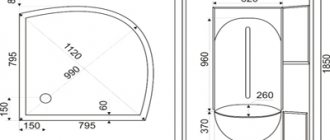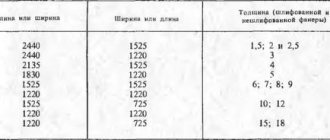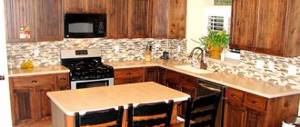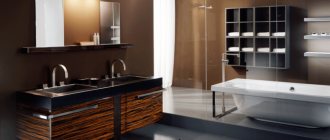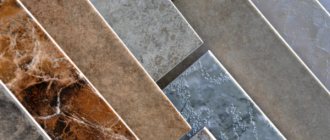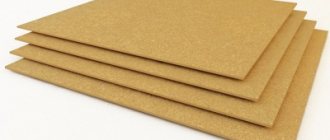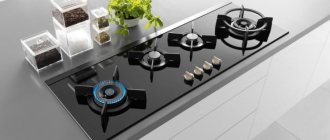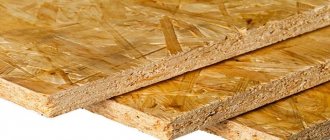Photo frames on the wall are a good interior design touch. Looking through the pictures, a person remembers pleasant moments, lifting his mood. It's not easy to hang frames on the wall; it takes a whole art to select photo moments and place them correctly on the surface.
It is necessary to take into account the overall design of the room; only in this case can a photo panel become a key accent. In order for decorative products to fit beautifully and harmoniously into the interior, you should adhere to the rules of selection and placement, which a thematic review from our editors will help you understand.
An excellent example of random placement of photo frames while maintaining parallel lines
Sizes of frames for different types of hives
Frames for hives in the photo
Bees lived for millions of years in a hollow, the prototype of which is queen cells, if we assume that a hollow is a very similar ball in shape, the walls of which are tightly sealed, with one hole, or entrance, at the bottom. Inside this ball there is a constant temperature of +36 °C, +37 °C (36-37 °C).
From this law of nature it is clear that the molecules inside always have a higher speed than those outside, so they, rushing out, freely leave the hollow. Air movement only in the outer direction allows the hollow to maintain not only warmth, but also dry walls. This also shows the regulation of the size of the entrance by bees with propolis: in warm weather they expand it, and in cold weather they reduce it. This indicates that we must transfer this condition to artificially created bee dwellings - hives, and in particular, its streets.
This circumstance can only be simulated using bee frames for hives with honeycombs built into them. Currently, depending on the hive system used, frames with different external parameters are used, ensuring the capacity of an unequal amount of honey on the honeycombs built in it.
Table “Dependence of the amount of honey on the design of the frames”:
| Frame design | External dimensions of frames for beehives, mm | Area of one side of the honeycomb, cm2 | Capacity, amount of honey, kg |
| Prokopovich frame | 268*125 | 320-330 | 1,5-1,8 |
| Standard female | 435*300 | 1180-1070 | 3,6-3,8 |
| Standard half frame | 435*145 | 490-500 | 1,6-1,8 |
| Multi-body hive | 435*230 | 840-850 | 2,4-2,6 |
| Ukrainian sun lounger | 300*435 | 1090-1180 | 3,6-3,9 |
| Roger Delon | 280*182 | 509-515 | 1,8-2,2 |
| Round | diameter 350 | 1099 | 3,7-3,8 |
In Russia, line hives, which appeared at the beginning of the 19th century, made it possible to construct a log hive with a detachable ceiling. However, as V.F. Shapkin notes, when the ceiling board was removed, the honeycombs rose along with it and broke off. This created great inconvenience and suggested the idea of inserting wide strips of rulers into the top of the deck under the ceiling. Bees would attach honeycombs to them.
Consequently, one of the design elements of the future beekeeping frame was the appearance of the upper ruler bar. By this time, thoughtful beekeepers noticed that colonies swarmed more often in logs of small volume and less often swarmed in logs of larger volume.
Therefore, it is generally accepted that log beekeeping marked the beginning of artificial swarming, the organization of layering, and the selection of swarm bees to strengthen weak colonies. The most experienced beekeepers introduced honey selection into beekeeping technology not in the fall, but before the spring harvest. In this case, the bees were not threatened by a lack of food in winter. This contributed to the preservation of bees in winter and the cultivation of large reserves of bees for the main honey harvest. When preparing bees for wintering, the concept of shelters for bees - omshaniks - first appeared. Central Russian bees excellently tolerated any cold and frost both in the hives and in the sides and logs, which were not protected by anything.
If families are strong, then not only the cold, but even the most severe frosts are not harmful to them. For a more successful wintering of the bees, the honeycombs were trimmed if they reached the bottom of the log. An air cushion or a large nesting space improved wintering. This was facilitated by the intercellular space, which began to be observed between the lines. The rulers were inserted into grooves, which were selected in the end walls of the deck on opposite sides. Together with the walls of the deck (hive), they formed a flat surface on which the ceiling was placed. The bees attached the honeycombs to rulers that supported them and also indicated the direction of the honeycombs.
Honey bees in their natural state tend to make spherical nests. In this case, individual areas with sowing on honeycombs may have a round shape, rather than square or rectangular. Theoretically, from the standpoint of the natural standard, it is necessary to recognize the round shape of the frame as the best. Since in practice it is difficult to construct such a frame and a hive, a square frame in its shape is closest to a natural nest. Of course, this frame shape corresponds to a cubic hive. However, testers of frames of various shapes (low-wide, Langstroth) have proven that bees overwinter equally well with any size of hive frame. Therefore, frames can be of different sizes: narrow-high, low-wide, square, magazine half-frames, ropes and even round.
It is generally accepted that the low wide Dadan and Langstroth frames have become the most popular. Subsequently, in the USA, the Langstroth frame and beehive were transferred to the category of standard. Although bees can be successfully kept on any type of hive frame, as evidenced by the vast experience of practicing beekeepers.
The video “Frames for Hives” shows various designs:
Top rail
Its length should be 47 cm; large parameters will not allow it to fit into the grooves of the structure. The thickness can vary from 0.1 to 2.5 cm, depending on the type of hive and the personal preferences of the beekeeper. The standard thickness is 1.8 cm, but many beekeepers do not agree with this.
Frame drawing for hive
Beekeepers are confident that the thinner the width of the slats, the more space remains for bees to build honeycombs. By significantly reducing this figure on all frames, you can get up to 1.5 kg of additional honey.
Advantages of Langstroth hive frames
The advantages of frames for Langstroth-type hives include the following factors.
- The standard size of a low-wide frame for hives corresponds to a low and flat hive body, on which a number of tiers from one to ten can be placed. Such a hive is of great convenience in the production of centrifugal honey, since when the bees need additional housing, first of all, it is necessary to increase the number of tiers as soon as possible, and then at the end of the season the tiers are removed as needed. A row of tiers cannot be added to square or deep hives due to the fact that the hives become unstable and access to the upper tiers will be difficult for the beekeeper.
- Printing long half-frames is much easier, since the knife blade passes completely across the entire surface of the low-wide frame.
- When designing a centrifuge for a Langstroth frame, it is easy to combine the proportional sizes of the individual parts.
- A tall frame is more difficult to remove from the hive than a low frame, and it is much easier to crush bees when removing and installing high frames than with low ones.
- Low-wide frames are more convenient for the production of sectional or comb honey. It is well known that bees, after forming a nest, tend to deposit honey in cells directly above the brood. In such a low frame as the Langstroth frame, there will be little honey in the nest, and more in the extensions, because bees, wanting to enlarge the nest, in the presence of a fertile queen, often advance the scarlet circle almost to the upper bar and, therefore, when honey flow begins, they will deposit honey in the extensions just where it is desirable for the beekeeper.
- When the bees are left to their own devices, they usually form a club at the end of the season close to the entrance and 5 or 8 cm below the top bars of the nesting frames. During the winter, the club, gradually eating up the honey reserves located above it, moves upward and, having reached the upper bars of the nesting frames, begins to move towards the rear wall of the hive.
This way the club reaches the top of the hive, where it is warmer during the coldest period of the year. In cases where an ordinary square frame is used, the bees are located directly above the entrance and at a distance of 10-13 cm from the top. However, during the coldest period the bees will not be at the top of the hive, since, having reached the top, they can only move a relatively short distance to the back wall of the hive due to the fact that the top bar of the square frame is relatively short. As for the Langstroth hive, during the entire cold period of winter the bees remain at the top of the hive, where it is warmer. As they consume the honey reserves, they move towards the back wall of the hive and gradually reach it. It is possible that by this time the weather will be warmer.
Design selection
Drawing: Dadan-Blatt blank
When the beekeeper determines the appropriate dimensions of the structure in which the bees will be located, the most suitable frames for the hive are selected. The dimensions of the bee frame are the main nuance that must be strictly observed during the DIY process. Taking into account the depth of the hive box for bees, the height and characteristic dimensions of the frames are determined.
Today, the following designs are actively used: store, Dadana-Blatta, Ukrainian, rue. The listed structures are purchased in stores or constructed with your own hands, using clear dimensions and characteristic drawing diagrams. Different types of bee frames have distinctive materials, sizes, and fastening features.
Given the wide range of models, it is important to remember that their sizes should not be larger than the parameters of the bee hive. The thickness of the sheets located on the sides should be the same as the thickness of the honeycomb.
The thickness of the bar located on top is not so tied to certain parameters. It ranges from one to three centimeters. Some hives contain eight, twelve, sixteen, and twenty-four frames. The number of frames does not affect the design parameters.
We invite you to find out where bees collect nectar
Blueprint: Ruth Blank
To construct a 16-frame hive with your own hands, you need to know the features of the device, dimensions and much more. The 16-frame beehive bed has the following design:
- Frame;
- The bottom, which can be either removable or non-removable;
- Lid;
- A sheet of plywood covering the top surface of the frames;
- Framework;
- If necessary, a vertical partition;
- A partition separating bee colonies;
- Shop;
- Insulating structures to retain heat for successful wintering;
- Boards attached to the exit holes;
- Feeders.
The design is quite simple, so if you have experience, knowledge and suitable tools, you can easily create an apiary from 16 frames.
Requirements for hive frames
Despite this, a hive frame of any type must satisfy certain requirements, namely:
- According to geometric requirements, the frames must be exactly the same, have right angles and no deflections in the side strips.
- According to mechanical requirements, frames must be lightweight and durable.
- According to the design requirements, the frames must be easy to assemble and have a large ratio of the useful part of the honeycomb to the total area of the frame.
- For economic reasons, frames should be cheap, made with simple tools from readily available wood.
- The frames should be pleasant (cleanliness of the bars) and comfortable for the bees (especially during wintering).
- It is necessary to anticipate the features of the frame that affect the profitability of the apiary.
The frame should provide the beekeeper with as much honey, wax and brood as possible. In the generally accepted standard framework there are some reserves, using which it is possible to increase the yield of beekeeping products. From this point of view, the upper and lower bars of the frames deserve the greatest attention. The fact is that without compromising the strength of the frame, the upper bar can be made with a cross-section of 25×15 mm, and not 25×22, as in a standard frame, and the lower bar can be 8-10 mm thick instead of 15 mm.
This saves wood. Secondly, it is better to make the cross-section of the upper and lower bars not rectangular, but triangular, with the apex of the triangle directed inside the frame.
Thus, we not only increase the area of the honeycomb in the frame, the increase in honey and wax from the frame, but also greatly facilitate the wintering of bees in the case when the club of bees moves from the lower building to the upper building or store. Bees in hives with conventional frames in this case cannot overcome the large cold honey-free gap between the buildings (up to 50 mm, taking into account the thickness of the upper and lower standard bars) and die, having large reserves of food at the top. In frames with a triangular section of the upper and lower bars, the honey-free gap is a little more than 10 mm, bees easily overcome it. It would be better if a special cutter was made to process the upper and lower bars of the frame. The cost of the cutter is compensated by the high return of the frames, good wintering of bees, and the ability to prepare winter food in advance.
However, in this case, a standard sheet of foundation is missing when sewing on frames. To do this, it is recommended to wax the lower edge of the foundation close to the lower bar, and the bees themselves will definitely reach the upper edge.
It is more convenient to sew frames with an electric stretcher, which must be made very carefully. This is especially true for the flatness of the strips that make up the plane of the welder and the same height of the contact protrusions through which current is supplied to the wires. Otherwise, in some places the foundation is cut, and in some places there is a lack of welding, you have to solder each wire separately, which sharply increases the labor intensity of welding and negates the advantages of an electric welder. It is also desirable that the electric welder have an adjustable current stabilizer, which allows the use of wire of different diameters for welding. It is advisable to use thin wire (0.25-0.3 mm) and stainless steel.
Only one improvement was made to the Dadan and Langstroth frames, namely, the expansion of the ends of the side rulers, thanks to which the bee space between the frames is established automatically. While an experienced beekeeper places frames one from the other at a distance of 12-13 mm or 35-37 mm from center to center, novice beekeepers who do not have the right eye, who are not aware of the importance and accuracy in relation to bee space, place frames or very close or very far from one another. On this basis, an improved Langstroth, or Hoffmann, frame was introduced.
The part of the hive that contains the set of frames for collecting excess honey is called the superstructure, or store. The nesting body is usually for a whole nesting frame, and the extensions can be for a whole nesting frame or for a half-frame. Honey is selected by removing the frames from the hive and clearing them of honey using a honey extractor. Honey selected in this way is called centrifugal. Each comb on both sides consists of a number of cells, which, when filled with honey, are sealed by the bees with a thin film of wax. This film is cut off with a special sharp knife. The printed honeycombs are then installed in the cassette nests of the honey extractor.
Honey extractor nests, two or more, are attached to an axis and driven into rotation in a metal vat at a relatively high speed. By centrifugal force, honey is sprayed out from the side facing the wall of the vat. The machine stops, the honeycombs turn around, the nests are then set into rotation again, and honey is sprayed out from the other side. In complex machines, the honeycombs are arranged like spokes in a wheel, that is, radially, and do not turn around. The emptied combs are returned to the hive and filled with honey, after which honey is pumped out again. This process is repeated one or more times throughout the season, as long as there are bribes.
Stand for frames with honey
The stand directly under the frames with honey is used during printing or drying by bees. During the inspection process, the beekeeper needs to get at least one frame so that it is convenient to operate the rest in the hive. To avoid having to simply place the frame on the ground, you can assemble your own stand or buy a specially made one.
Making a stand for frames with honey begins with measuring the frames themselves, since a smaller stand will definitely not be useful. The first thing you need to do is make the base: you can take a ready-made baking sheet, suitable in size, a trough, a tray, you can carve it out of wood, but this is extremely labor-intensive and not everyone can do it. Next you will need two supports, for the first frame and dividers for the subsequent ones. The supports are made of thick wire and boards.
Advantages and disadvantages of the Hoffmann framework
Hoffmann's framework
- The side slats of the frame, 34 mm wide along the entire height, act as a “curtain” on both sides and create the ability to control air exchange in the streets. At the same time, the width of the upper and lower bars, which is 25 mm, allows you to clearly regulate the bee gap. In this case, the street parameter becomes, as in the natural standard, equal to 9 mm. When installing a sealed geometric ceiling, the nest of a bee family inside the hive turns into an inverted thermos. It is in it that we can, according to the principle of convection, control air exchange;
- the air is directed from the bottom of the frames up, along the outermost streets of the nest, to the sealed ceiling, i.e., proper air circulation occurs;
- the excreted waste products of bees, mixing with the air, first warm it, and then separate it into carbon dioxide and heat;
- The separated components of the air mixture perform a dual function. Heat always tends upward to the ceiling, and carbon dioxide, which is 1.6 times heavier than air, sinks down, performing a preventive and sanitizing role in relation to parasites (Varroa destructor and Acarapis woodi mites) and the causative agent of ascospherosis;
- As a heat insulator, carbon dioxide conducts heat 1.7 times worse than air. Therefore, they believe that this is the best heat insulator of all well-known materials;
- To treat parasites, bees easily cover the lower section of the street, equal to 9 mm, and intensively increase the carbon dioxide content in it.
What makes it possible to achieve the identified benefits as a result of using the innovation framework:
- worker bees do not spend additional energy heating the nest and brood. At the same time, only 20% of the bees spend energy on heating the nest and raising brood, and the remaining 80% of the bees work for bribes. Conversely, when using a Hoffmann frame with a bee gap of 12 mm, 80% of the bees' energy is spent on heating the nest and raising brood;
- air flows create natural bee air exchange: upon reaching the sealed ceiling, warm air passes to the side outer frames and through their side gaps, available on all four sides, between the frames and the wall of the hive, they fall down. At the same time, the oncoming cold air also warms up;
- in the streets with frames occupied by printed brood, the minimum number of warming worker bees is recorded.
Manufacturing
Making a hive from 6, 10, 12, 16 or 20 frames with your own hands requires a clear understanding of the design and required dimensions.
To make 16 frame beehives you will need:
- Soft wood (pine, poplar, linden or aspen) to retain heat in the structure and make it light;
- Ruler;
- Sample;
- Plywood;
- Tools for working with wood;
- Hammer;
- Drill;
- Chisel;
- Glue;
- Fastening consumables;
- Roofing materials;
- Pre-made 16 frames.
It is important to observe the internal dimensions of the body of the hive to ensure proper operation and comfortable living of bee colonies for many years.
Drawings and dimensions
As in the 20-frame hive, the hive-bed consists of a front, back and two side walls, and a non-removable bottom. The front and rear walls must be at least 40 cm wide, and the internal dimensions of the side walls must be 37 mm.
On the front surface there are 2 rectangular cells measuring 8x1.2 cm on top and 25x1.2 cm on the bottom. The bottom of the 16-frame can be made either removable or non-removable.
The magazine is made of boards measuring 40x30 mm, fastened with boards and nails. The frames must have internal dimensions of 450x145 mm, nesting dimensions - 450x300 mm.
Assembly
To assemble 16 frame hives you must follow the following algorithm:
- Cut out the necessary parts from wood according to the drawings using a ruler. It is important to accurately and accurately cut out all the parts for subsequent ease of assembly of the structure.
- Bottom assembly. The bottom will consist of 2 boards, which must be connected around the perimeter using nails.
- Next, the side boards are secured to the base.
- We form the front and back walls, cut out slots to accommodate 16 frames measuring 18x11 mm.
- The roof is being built, the boards are also fastened with nails. On the back of the roof it is necessary to make a hole measuring 200-3 mm for ventilation. A round hole with a diameter of 2.5 cm should be made on the front part. The holes should be closed with a mesh from the inside.
- Attach small legs to the base.
- Dry the wood and paint it to increase its service life.
- On the side walls on the outside you can make handles for convenience.
It is recommended to carry out modification by creating a multi-hull design. To do this, it is necessary to divide the hive bed with a vertical partition so that 10 frames for storing honey are placed in 1 part, and 2 empty and 4 with foundation in the other.
Microclimate and air movement in a bee nest
Table “Indicators of microclimate parameters and air movement in the bees’ nest depending on the honeycomb frames used in the hive”:
| Frames used | Air speed in the street, V m/s | Temperature, °C | Humidity, % | |
| in the brood rearing area | at the honey frames | |||
| Hoffmann, with side bar at the top 37 mm (control) | 2,9 ±0,32 | 34,6 ±1,15 | 21,5 ± 0,89 | 86,4 ± 1,26 |
| Frame with wax curtain function | 0,5 ±0,05 | 36,7 ±0,68 | 26,8 ±0,65 | 98,7 ±0,48 |
In the control group of bee colonies, the speed of air movement due to its through passage in all four directions was 5.8 times higher compared to the 2nd group. In the experimental group, the speed of air flow was only 0.5 m/s. At the same time, it was recorded that with the reduction of the street to 9 mm, the air located between the wall and the outermost street is directed from the bottom of the frames up, along the walls of the hive to the sealed ceiling, i.e., proper air circulation is carried out controlled by the bees.
If we consider the movement of air in a classic hollow and beehive, then we can show how air convection occurs in them.
Let's take a classic hollow with a diameter of 27 cm (270 mm); inside the hollow, the nest usually consists of five honeycombs. Ventilation cavities 50 mm wide are formed along the edges of these honeycombs and the wall of the hollow on both sides of the nest. So, if the width between the mediastinums of two honeycombs is 34 mm, then the total length of the nest will be 34 × 5 = 170 mm. If you minus the total length of the nesting buildings (270-170) from the total diameter of the hollow, it will be equal to 100 mm. If the result obtained is divided in half, then 50 mm is left on each side for the ventilation system. Therefore, in a hive with a new ventilation system, the outermost side space should be slightly larger.
The principle of convection begins from the moment when a bee enters the alley between the 5-piece honeycombs, forming four alleys in the hollow, and begins to breathe. At the same time, the exhaled waste products of worker bees begin to accumulate in the alley, representing a mixture of different gases.
The lightest gas is moist air with a temperature of 36.0-37.0°C. It always rushes to the sealed ceiling, concentrating there, while simultaneously creating conditions for the bee to feed. At this time, the bee opens the cell of the honeycomb, and honey, being a hygroscopic product, begins to absorb moisture from the condensed humid air.
As soon as this moist air comes into contact with the honey located above the ceiling, it begins to cool and spread across the top of the nest and then down along the walls into the air ducts located along the edge of the nest.
Carbon dioxide is several times heavier than air, so it sinks down. At the same time, it goes beyond the nest. Ventilation in the streets of five hundred, i.e. in four streets, is carried out due to the movement of gases in two directions: the minimum amount of light moist air goes up, and the main part of the gases, represented by carbon dioxide, goes down and gives off heat to the air under the nest . This air is distributed throughout the hollow to the right and left. But since he cannot enter the street, he enters the air duct and begins to rise upward along the outermost cells in contact with the wall. At the same time, cooling moist air flows down from the ceiling along the side walls. But since it is still quite hot, but at the same time humid and not completely cooled, it is able to heat the rising oncoming flow of cold air.
This accelerates the movement of air currents rising upward, which are distributed along the streets located above. You just need to understand one condition: the air does not rise up the streets from bottom to top, since the streets are filled with bees that breathe and fill the street with carbon dioxide. The concentration of carbon dioxide can reach 4% or more. Since bees always block the bottom of the street from below, carbon dioxide is constantly accumulating, and when going down, its concentration in the street increases (up to 10% or more). This contributes to the operation of the street and the nest as a whole according to a principle similar to the operation of a piston, which ensures the suction of oxygen-enriched air into the streets.
The above helps create favorable temperature conditions in the brood rearing area. The maximum comfortable temperature in the brood rearing zone was recorded in the second group - 36.7°C. As a result, worker bees did not expend additional energy on heating the nest and brood. At the same time, only 20% of the bees spent energy on heating the nest and raising brood, and the remaining 80% of the bees flew out to collect nectar. Conversely, when using a Hoffmann frame with a bee gap of 12 mm, the energy produced by 80% of the bees was used to heat the nest and raise brood.
At the same time, the heat condensed in the moist air rose upward, and carbon dioxide, being heavy, fell down, performing a preventive and sanitizing role in relation to parasites and the causative agent of ascospherosis.
Table “The effect of using a frame with a wax curtain function on mites and the presence of the causative agent of ascospherosis in bee colonies”:
| Hives equipped with frames | Mites,% | Presence of the causative agent of ascospherosis |
| Hoffmann, with side bar at the top 37 mm (control) | 3,7 ±0,96 | At the bottom of the frame |
| Frame with wax curtain function | 1,1 ±0,14 | Absent |
Here we state that moving air currents create natural bee air exchange: upon reaching the sealed ceiling, warm air enters all the streets, saturating them with fresh oxygen, the bees inhale it, and the convection process described above is repeated again.
A special feature of using a frame with a wax curtain function is that in the streets with frames with printed brood, a minimum number of worker bees engaged in heating is recorded. Queen bees in the families of the experimental group, receiving royal jelly from the workers forming the retinue, develop high egg production.
Due to the increase in nest temperature to the upper limits of the physiological norm, queen bees do not lay unfertilized eggs. This is also facilitated by the street parameter of 9 mm. As a result, in the spring there is no drone brood in the colony for a long time. Therefore, in the early spring, bee colonies of the 2nd group use their energy to raise bee brood, that is, working individuals. This is especially noticeable from April 28 to May 9.
This advantage in brood rearing, judging by the egg production of queen bees, remains in the 2nd group until the end of observations. At the same time, the maximum indicators of average daily egg production in bee colonies from May 9 to June 3 in the described group ranged from 2383 to 2575 eggs per day (in the control - from 2200 to 2258 eggs). The intensive work of bee colonies aimed at raising brood was evidenced by the intensive supply of nectar and pollen by worker bees. At the same time, the pollen load coefficient in group 2 was 1.8 times higher than its similar value in the control.
Evaluating bee colonies based on the results of using a traditional frame (1st control group) and a frame with a wax curtain function (2nd group), we can identify clearly different economically useful indicators.
Table “The influence of using a frame with a wax curtain function on the economically useful indicators of bee colonies (arithmetic average values per family with n = 5 and three times”:
| Hives with frames | Mass of bees in the street, g | Number of frames in the case, pcs. | Strength of families to the main honey collection, streets/kg | Layers formed, pcs. | Commercial honey received, kg |
| Hoffmann, with side bar at the top 37 mm (control) | 298,4 | 12,0 | 28,0/8,4 | 2,0 | 68,0 |
| Frame with wax curtain function | 211,0 | 13,0 | 58,0/12,3 | 5,0 | 224,0 |
According to the research results, one of the key points can be considered a decrease in the number of bees in the street in families of the 2nd group. At the same time, the number of hundred frames increases, reaching 13 pieces. The strength of bee colonies of the 2nd group before the main honey harvest was, compared to the control, 1.46 times higher (by 3.9 kg). There were no drones in the families until the end of June. By May 20, five layers were formed from the bee colonies of the experimental groups. The bee colonies of the 2nd group produced 3.29 times more commercial honey compared to the 1st group.
Thus, using a frame with a side bar width of 34 mm over the entire height, it not only serves as a wax curtain in the nest, but also creates a bee gap that corresponds to the natural standard. At the same time, we adapt the hive into a hollow with a ventilation system for the nest inside the hive, built on the principle of an inverted thermos. In this case, the outer frames and their honeycombs isolate the nest in all four spaces, in relation to the wall of the hive. Ultimately, this allows you to have a space managed by the bees themselves, in which they are comfortable both in summer and winter. The use of a frame with a side bar along the entire frame height of 34 mm (in the control, Hoffmann frames have 37 mm in the upper third) increases the number of hundred frames to 13 pieces, while simultaneously reducing the size of the street to the parameters of its compliance with the natural standard - 9 mm. This parameter of the street allows worker bees to effectively use it to create comfortable conditions for raising brood and increasing the egg production of queens, especially in the early spring.
Next, you will find out how many frames there are in the hive, and how they should be positioned.
How to decorate a wall with framed photographs
Frames need to be selected not only according to the color, size and style of the interior, but also the purpose of the room. Strict shapes would be appropriate in a study; it would be better to purchase luxurious frames for a living room; romantic pieces would be suitable for a bedroom; funny ones would be suitable for a nursery.
Is it possible to adjust space using a photo?
Modular images are ideal for visual correction. They can be placed without frames to create a holistic feel. The result is an imitation window that adds spaciousness to the room.
Dividing a picture into three or more parts is a riddle that attracts the eye. If you make a breakdown in such a way that you get several rectangular parts located vertically, you will “raise” the ceilings, horizontally located fragments will make a narrow room wider. Square parts will correct a ceiling that is too high.
How to choose the right midline height in a collage
The most common mistake in creating a collage is a chaotic arrangement of photos, without a unifying idea. This does not mean that strict conformity of shapes and symmetry must be observed.
Ideally, they are located opposite the eyes, so that to study the photo you can only slightly turn your head up or down. This is the middle line in the photo gallery. Designers recommend placing it at a height of 152 centimeters from the floor.
How to create a general composition from different photos
There are a few simple rules, following which you can create the perfect composition:
The principle of symmetry in the placement of images
If you are mounting a photo above the sofa, focus on its center - this way you will get a symmetrical composition. For a photo above the dining table, it is permissible to move away from the recommended 152 centimeters of the center line. It is better if the pictures are placed at eye level of a sitting person. Make sure that the gallery does not “run away” from the table, but is placed strictly above it.
In this case, the images need to be fixed so that they are located at a distance of one and a half meters from the steps. It turns out that the collage repeats the steps of the staircase, as if playing with it. It is important that the distance between the photos on the wall is the same.
How to highlight the central photo on the wall
Selecting the central photo is easy. It should already differ from others in its larger size. If you want, you can accentuate attention with a contrasting frame, or a wider frame than everyone else. The central photo can be framed with an unusually shaped frame. But keep in mind that to maintain symmetry, such a frame must be repeated in at least one of the smaller frames.
How many frames should there be in the hive and their location
With the spread of hives of the Dadan and Rut system, the number of frames in the hive corresponds to 12 and 10 pieces. At the same time, the Hoffmann frames used in them with a side bar width of 37 mm in the upper third create “optimal parameters” for a street of 12 mm. However, 12 and 10 frames placed in the nesting bodies of the corresponding hive systems do not correspond in numerical values to the biological compatibility of heteropolarity, compatible with the individual development of the organism.
So, if you install not 10 frames, but 9 or 11 pieces. in the nest, we will thereby achieve better development of the family. In the natural environment, odd numbers are always found in the animal world, for example, in geese, ducks and chickens, if they have an odd number of eggs, then they develop normally and all the chicks hatch. As soon as they have an even number of eggs in the nest, half of them are chatterboxes. When talking about how many frames there should be in a hive, it is important to know why you can’t put an even number of frames. The thing is that when there is an even number of frames in the socket, a magnetic field arises in which positively charged polarity prevails, that is, + and +.
Everyone knows that positively charged poles repel each other, so the magnetic field has a depressing effect on the brood. Brood development slows down. In the case of an odd number of frames in the nest, an attractive magnetic field with different poles is created. This magnetic field promotes the development of the bee. Therefore, we must adhere to natural standards in the nest, always placing an odd number of frames.
As for the location of the frames in the hive, they should be directed along the magnetic poles of the earth, that is, from north to south. But where should the hive entrance be oriented? In our opinion, it is necessary to orient the hive entrances to the north. In nature, if we consider the entrance of the hollow with bees, it is mainly located on the north side. Why? If a person gets lost in the forest, then he orients himself mainly by the color of the tree bark. One of its sides is light, that is, sunny - southern, and the other dark - northern. The north side of the tree is always wet. Therefore, moss grows on the surface of the tree bark on the north side of the trunk. Only on this side do the knots predominantly rot, forming a hole, which the bees, when settling in, use as an entrance. Therefore, we must orient the hives with their entrances to the north. The relevant question here is, how many entrances should there be in the hive? Does this compare with the natural standard? Given the location of the entrance in tree hollows, we must help the bees and promote increased productivity.
By following the principles of nest organization according to natural standards, honey bees become more peaceful and less aggressive. Here, of course, it is appropriate to remember that the Russian Empire, along with furs, exported honey and wax from agricultural lands. At the same time, no one particularly observed excessive aggressiveness of Central Russian bees. Perhaps we have created inadequate conditions for the existence of honey bees by populating them in hives without observing the principles of nest construction found in the natural standard. This contributed to an increase in both aggressiveness and malice, recorded after the relocation of bee colonies to the hives, which is especially characteristic of the Central Russian breed, which has adapted to the sharply continental climate with its nesting buildings built in hollows.
How can the malice of honey bees be neutralized when kept in hives of any system? To do this, you need to leave only one round lower entrance with a diameter of 35 mm, paint the hive with paint containing aluminum powder and creating a protective screen from atmospheric electricity and from the Earth's electric field.
In this case, be sure to remove the lower slotted taphole. The entrance should be arranged, as when a dried branch falls out on a tree, with a downward slope. The lower part of the inclined entrance creates a micro-landing area for arriving bees.
What does one entrance, located in the lower part of the nest, create in a hollow with a bee colony? Nesting buildings, honeycombs, stretch from top to bottom up to four meters or more. Therefore, in the lower part, at the location of the taphole, a buffer zone is formed. This circumstance helps regulate the temperature of the nest. If all the above parameters are observed, the bee colony in the hive is able to maintain the temperature at 36.5°C without much effort. At a given nest temperature, the bee colony produces primarily bee brood.
Research shows that it is possible to prevent the premature hatching of drones only if, at the beginning of the development of families, a one-step increase in the volume of the hive with buildings with hundreds of frames is carried out to the nest volume parameter corresponding to the main honey collection. Consequently, an increase in the volume of the hive and compliance with the parameters of the streets creates the physiological prerequisites for increasing the strength of families from early spring to mid-June. It is after mid-June that families begin hatching drones. This is recorded by the deconstruction of drone cells on the honeycombs and the appearance of eggs laid in them. In the first ten days of July, nascent drones begin to emerge from the cells, which become sexually mature after 12-14 days.
- Author: admin
Rate this article:
- 5
- 4
- 3
- 2
- 1
(6 votes, average: 3.3 out of 5)
Share with your friends!
Plastic frames
The most relevant and proven method for making frames over the years is to use wood. But constantly developing modern technologies lead to the emergence of new, no less suitable products. Plastic has become an excellent material replacing wood. It makes it possible to produce lighter, yet very durable and comfortable frames for hives.
Note! Wood has the ability to absorb moisture from the air in the cold season and crumble in the heat. Over time, the quality of the frames deteriorates and the quality of the honey decreases.
Plastic frames for collecting comb honey are already produced on an industrial scale and are sold in a ready-to-use design. All you need to do is cover the plastic with a thin layer of wax and install the frame in the hive. In addition to standard plastic elements, mini-frames are made to combine them into a cassette block.
Properly produced frames will not only make the life of bees comfortable, but will also significantly facilitate the work of the beekeeper. Therefore, they approach production wisely, taking into account all the nuances.
